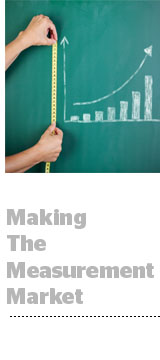
Vista Equity Partners’ plan to buy a majority stake in Integral Ad Science – valuing the company at $820 million, according to AdExchanger sources, or up to $850 million, according to Axios – underscores the ongoing importance of ad verification and the pressure these vendors face to grow their product offering to remain competitive.
“There’s a bit of a land grab going on around the world,” said John Montgomery, GroupM’s global head of brand safety.
It’s a shift he’s noticed over the last two years. Clients once used Moat for viewability, IAS, DoubleVerify or WhiteOps to find invalid traffic and IAS or DoubleVerify for contextual brand safety. But now, all these vendors recognize the opportunity to earn a brand’s complete business.
“Most big clients don’t want to use multiple verification providers for fraud or invalid traffic, viewability or contextual brand safety,” Montgomery said. “They want an all-you-can-eat service and [to] pay one price for it.”
Providing that buffet requires access to capital, which independent tech companies can get either through an acquisition by a strategic buyer like Oracle or a private equity firm. (They can also get it via IPO, but it’s difficult to devote funds to product development when you’re beholden every quarter to shareholders demanding profitability.)
Anyone tracking the activity of the ad verification vendors will note the collective expansion of product features.
For instance, IAS differentiates in its ability to do viewability, brand safety and fraud, CEO Scott Knoll told AdExchanger in a previous interview.
DoubleVerify can too, said CEO Wayne Gattinella. The ability to do all three went live just this quarter, less than a year after DoubleVerify sold a majority stake to Providence Equity Partners for a reported $200 million.
And in April, Oracle Data Cloud bought Grapeshot, adding contextual targeting and engagement metrics to Moat’s viewability verification.
Gattinella also sees the importance of measuring engagement: “Engagement will be the next important and well-documented metric that leads to higher levels of confidence in media that’s being delivered.”
Joshua Lowcock, chief brand safety officer at Universal McCann, also sees development in assessing data quality. “That’s ensuring the data you’re using for targeting in your database is genuine, real and has quality customers,” he said.
That’s an opportunity Gattinella also recognizes. Brands often park bad data in data management platforms – an area he hopes ad verification can help cleanse.
So, the opportunity for ad verification vendors is much bigger than verification alone, said Moat co-founder and CEO Jonah Goodhart
“The digital advertising market is now worth more than $200 billion annually, and spending continues to grow as consumer time and attention shift to digital, so marketers need the right data capabilities and assets to enable, drive and measure success,” he said.
As tired as many are of talking about supply chain hygiene and brand safety, those concerns aren’t going away.
Considering that those concerns will soon hit other platforms, such as OTT, Twitter, Snap and Amazon (DoubleVerify said it’s launching on Twitter this month and will launch on Snap and Amazon in Q3), as well as ad buyers in countries like India and China, it’s easy to see why deep-pocketed acquirers are attracted to the growth opportunity and why their capital is sorely needed.
Certainly these expansion opportunities were not lost on IAS’ Knoll, who told AdExchanger earlier this week that he sees opportunities to grow globally and expand what it can measure.
This post was syndicated from Ad Exchanger.

More Stories
Pepsi launches new look
The Garage Podcast: The Future of Media Through Optimization and Personalization
Campari and Creature Post celebrate first bottle redesign in a decade